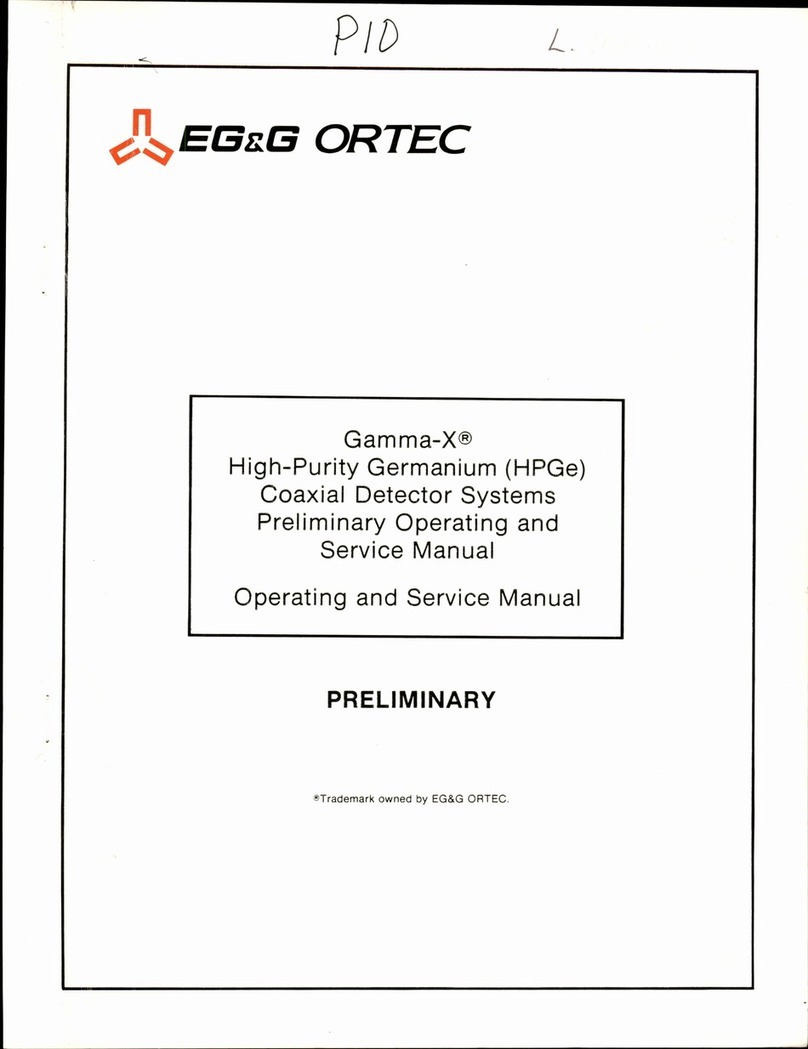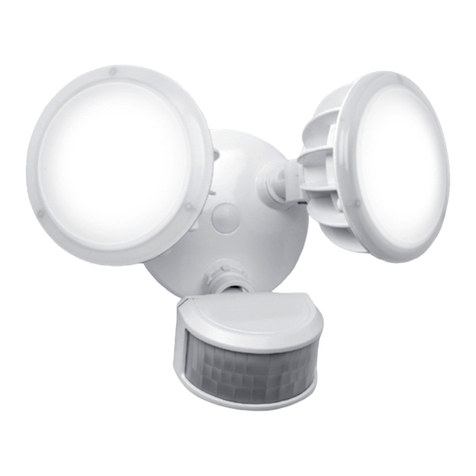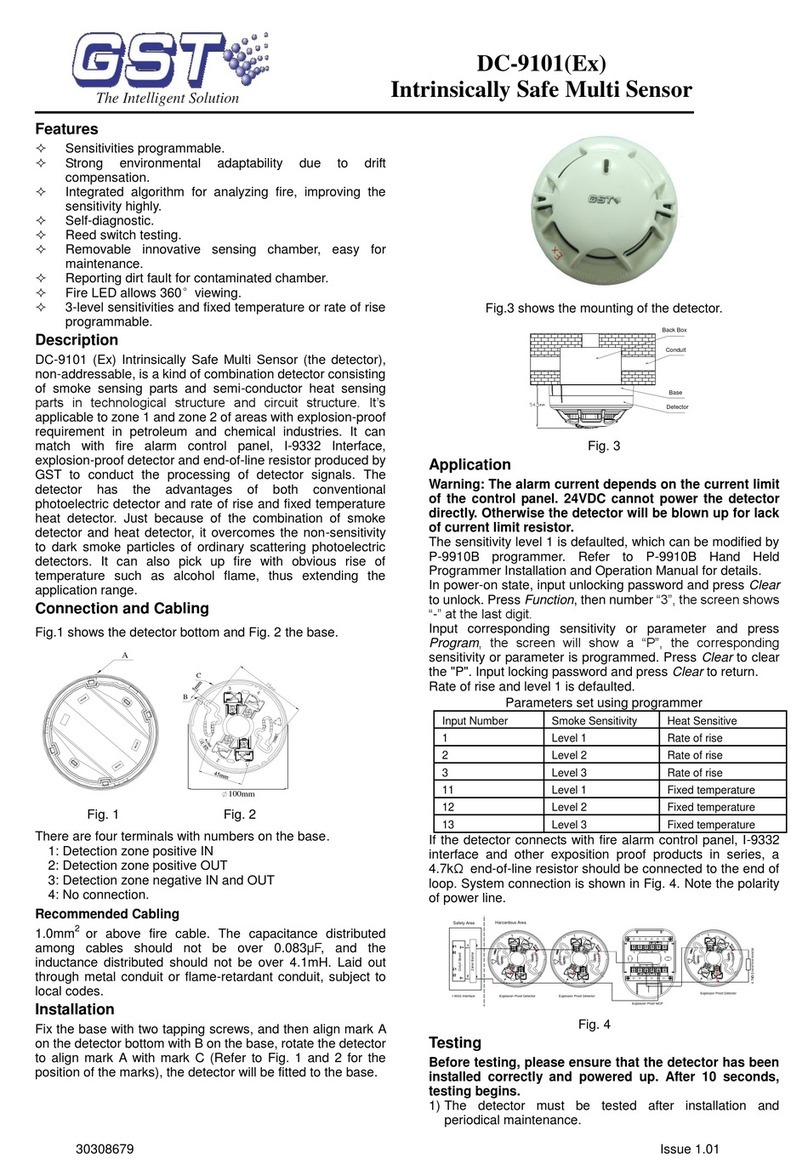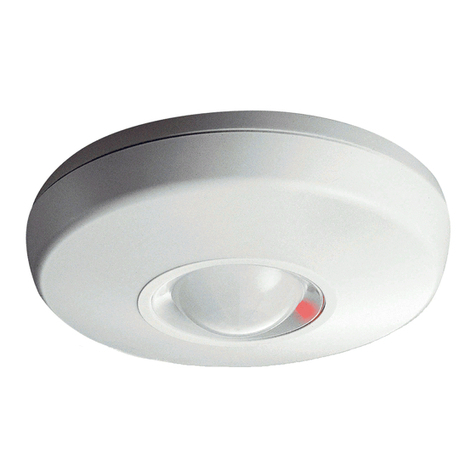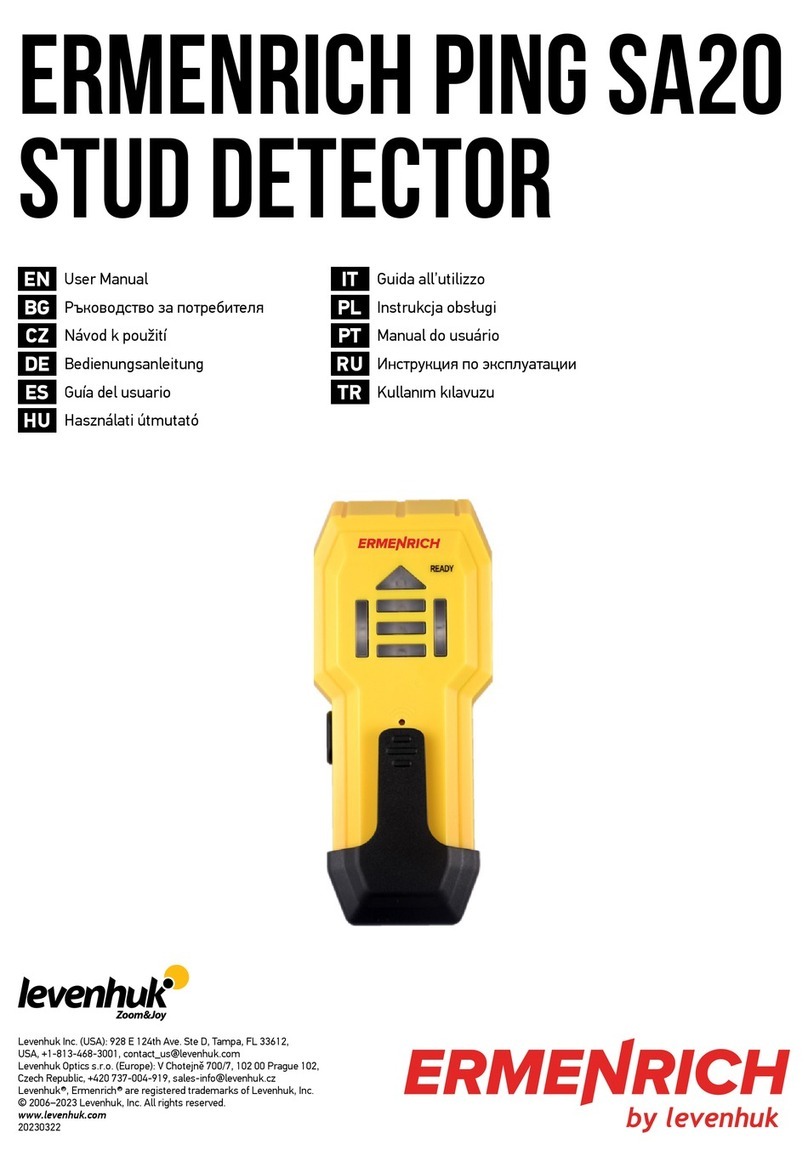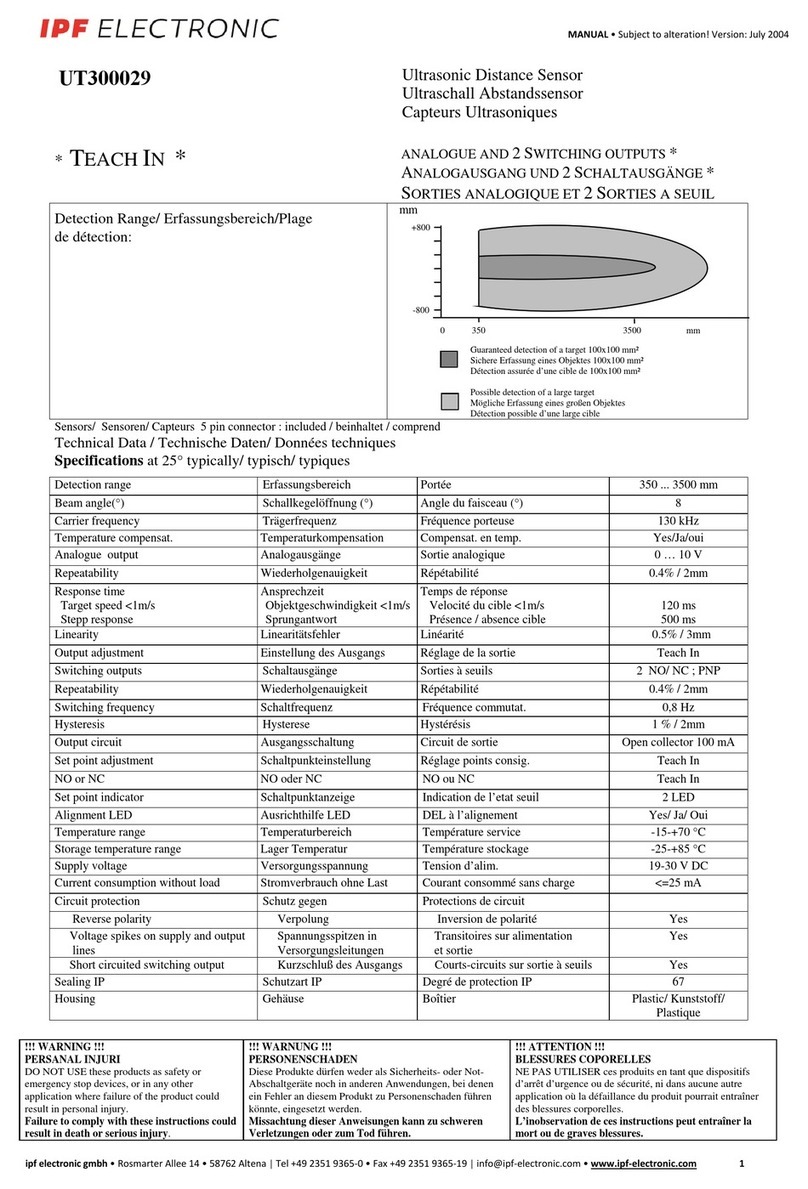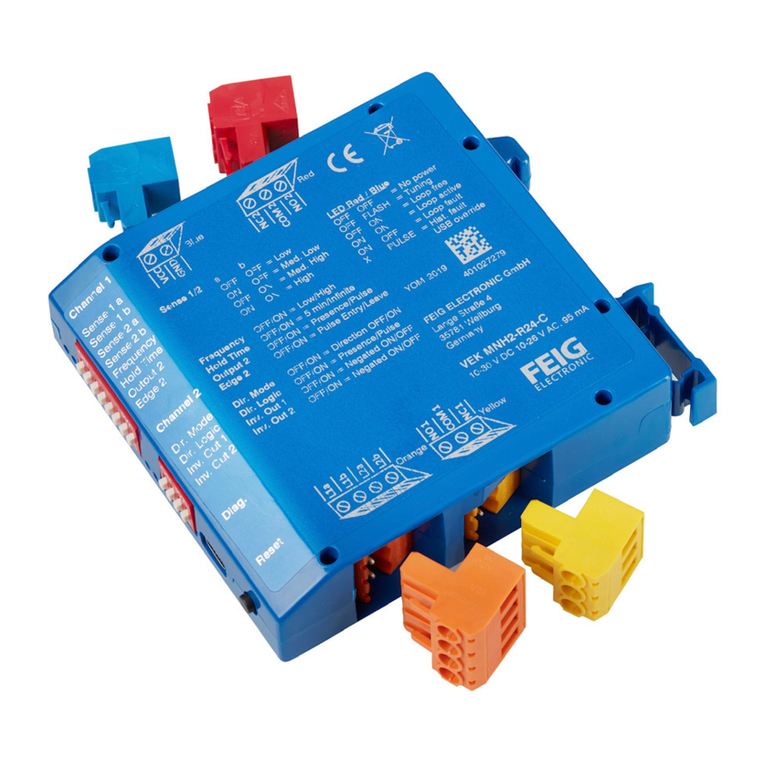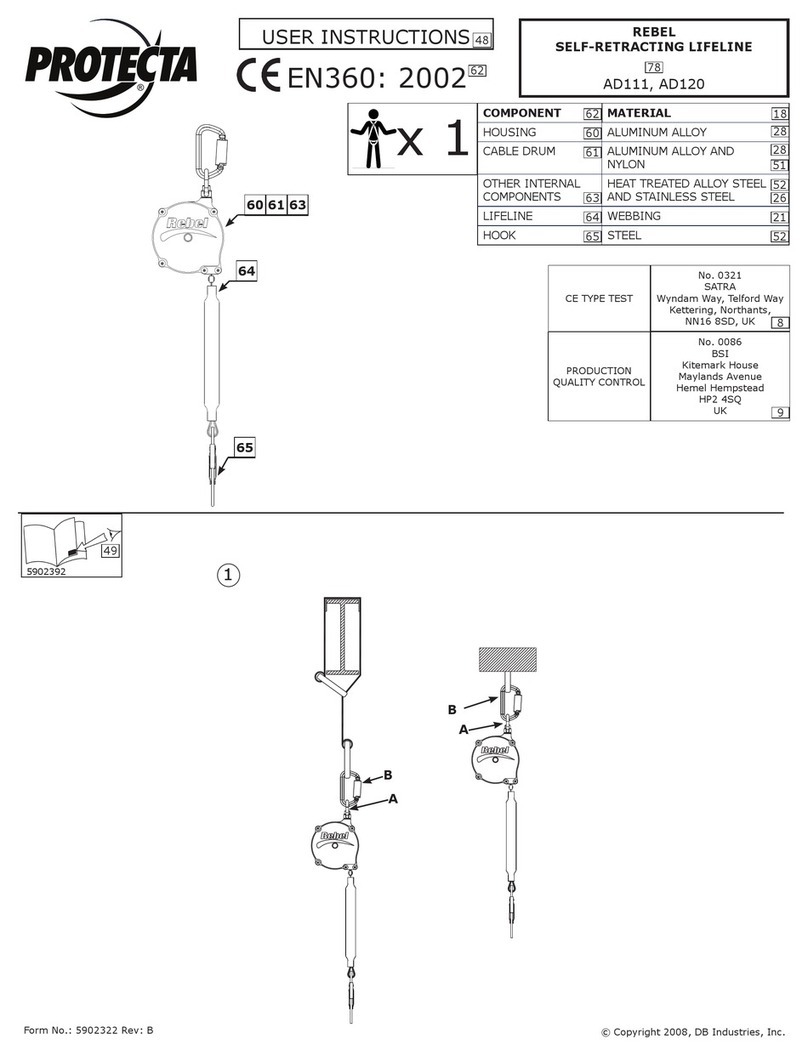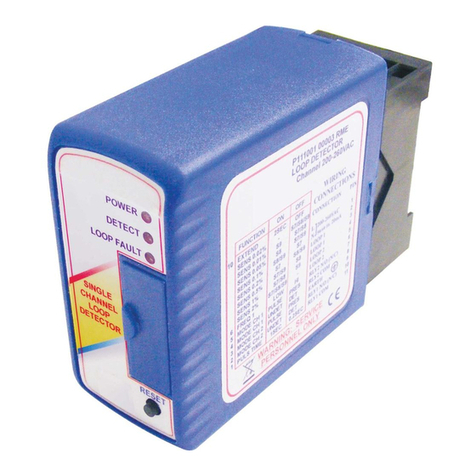EG&G ORTEC 459 Service manual

4
n
Model
459
5
kV
Detector
Bias
Supply
Operating
and
Service
Manual

CHANGE
NOTICE
FOR
459
EON
459-53
june
28,
1988
On
schematic
dwg
#700030
change
flag
note
#8:
From
029
can
be
either
.0047
uF
6kV
or
.0015
uF
7.5
kV
To
029
canbe
either
.0022
uF
6kV
or
.0015
uF
7.5
kV
Model
459
5
kV
Detector
Bias
Supply
Operating
and
Service
Manual
This
manual
applies
to
instruments
marked
"Rev
52"
on
rear
panel
WARNING
This
equipment
generates,
uses
and
can
radiate
radio
frequency
energy,
and
if
not
installed
and
used
in
accordance
with
the
instruction
manual,
may
cause
interference
to
radio
com
munications
As
temporarily
permitted
by
regulation
it
has
not
been
tested
for
compliance
with
the
limits
for
Class
A
computing
devices
pursuant
to
Subpart
J
of
Part
15
of
FCC
Rules,
which
are
designed
to
provide
reasonable
protection
against
such
interference
Operation
of
this
equipment
in
a
residential
area
is
likely
to
cause
interference,
in
which
case
the
user,
at
his
own
expense,
will
be
required
to
take
whatever
measures
may
be
required
to
correct
the
inter
ference
Printed
in
U.S.A.
ORTEC
Part
Number
733310
2811
3.0C
0388

standard
Warranty
for
EG&G
ORTEC
Nuclear
Electronic
Instruments
EG&G
ORTEC
warrants
that
the
items
will
be
delivered
free
from
defects
in
material
or
workmanship.
EG&G
ORTEC
makes
no
other
warranties,
express
or
implied,
and
specifically
NO
WARRANTY
OF
MERCHANTABILITY
OR
FITNESS
FOR
A
PARTICULAR
PURPOSE.
EG&G
ORTEC's
exclusive
liability
is
limited
to
repairing
or
replacing
at
EG&G
ORTEC's
option,
items
found
by
EG&G
ORTEC
to
be
defective
in
workmanship
or
materials
within
two
years
from
the
date
of
delivery.
EG&G
ORTEC's
liability
on
any
claim
of
any
kind,
including
negligence,
loss
or
damages
arising
out
of,
connected
with,
or
from
the
performance
or
breach
thereof,
or
from
the
manufacture,
sale,
delivery,
resale,
repair,
oruseof
any
item
orservicescovered
by
this
agree
ment
or
purchase
order,
shall
in
no
case
exceed
the
price
allocable
to
the
item
or
service
furnished
or
any
part
thereof
that
gives
rise
to
the
claim.
In
the
event
EG&G
ORTEC
fails
to
manufacture
or
deliver
items
called
for
in
this
agreement
or
pur
chase
order,
EG&G
ORTEC's
exclusive
liability
and
buyer's
exclusive
remedy
shall
be
release
of
the
buyer
from
the
obliga
tion
to
pay
the
purchase
price.
In
no
event
shall
EG&G
ORTEC
be
liable
for
special
or
consequential
damages.
Quality
Control
Before
being
approved
for
shipment,
each
EG&G
ORTEC
nuclear
electronic
instrument
must
pass
a
stringent
set
of
quality
control
tests
designed
to
expose
any
flaws
in
materials
or
workmanship.
Permanent
records
of
these
tests
are
maintained
for
use
in
warrany
repair
and
as
a
source
of
statistical
information
for
design
improvements.
Repair
Service
If
it
becomes
necessary
to
return
this
instrument
for
repair,
it
is
essential
that
Customer
Services
be
contacted
in
advance
of
its
return
so
that
a
Return
Authorization
Number
can
be
assigned
to
the
unit.
Also,
EG&G
ORTEC
must
be
informed,
either
in
writing,
by
telephone
[(615)
482-4411
]
or
by
telex
(55-7450)
of
the
nature
of
the
fault
of
the
instrument
being
re
turned
and
of
the
model,
serial,
and
revision
("Rev"
on
rear
panel)
numbers.
Failure
to
do
so
may
cause
unnecessary
delays
in
getting
the
unit
repaired.
The
EG&G
ORTEC
standard
procedure
requires
that
instruments
returned
for
repair
pass
the
same
quality
control
tests
that
are
used
for
new-production
instruments.
Instruments
that
are
returned
should
be
packed
so
that
they
will
withstand
normal
transit
handling
and
must
be
shipped
PREPAID
via
Air
Parcel
Post
or
United
Parcel
Service
to
the
nearest
EG&G
ORTEC
repair
center.
(In
the
case
where
the
instrument
did
not
function
upon
pur
chase,
EG&G
ORTEC
will
pay
shipment
costs
both
ways.)
The
address
label
and
the
package
should
include
the
Return
Authorization
Number
assigned.
Instruments
being
returned
that
are
damaged
in
transit
due
to
inadequate
packing
will
be
repaired
at
the
sender's
expense,
and
it
will
be
the
sender's
responsibility
to
make
claim
with
the
shipper.
Instruments
not
in
warranty
will
be
repaired
at
the
standard
charge
unless
they
have
been
.grossly
misused
or
mishandled,
in
which
case
the
user
will
be
notified
prior
to
the
repair
being
done.
A
quotation
will
be
sent
with
the
notification.
Damage
in
Transit
Shipments
should
be
examined
immediately
upon
receipt
for
evidence
of
external
or
concealed
damage.
The
carrier
making
delivery
should
be
notified
immediately
of
any
such
damage,
since
the
carrier
is
normally
liable
for
damage
in
shipment.
Packing
materials,
waybills,
and
other
such
documentation
should
be
preserved
in
order
to
establish
claims.
After
such
notification
to
the
carrier,
please
notify
EG&G
ORTEC
of
the
circumstances
so
that
assistance
can
be
provided
in
making
damage
claims
and
in
providing
replacement
equipment
if
necessary.

IV
E
BIAS
SUPPLY
0-5KV
■■■
■
■!
.■■.
OUTPUT
VOLTAGE
HIGH
VOLTAGE
p-_^
iiftiiii
fe
jsigsi?;*?
*
-tf'
'
!
SslSS

ORTEC
459
5KV
DETECTOR
BIAS
SUPPLY
1.
DESCRIPTION
The
ORTEC
459
0—5
kV
Detector
Bias
Supply
provides
a
bias
voltage
of
either
polarity
for
a
semiconductor
detector
or
for
a
very
low
current
voltage
divider
in
a
photo-
multiplier
tube
and
scintillation
detector
assembly.
Two
outputs
are
provided
simultaneously:
one
for
a
range
of
0
to
5
kV
for
high
voltage
requirements
and
one
for
a
range
of
0
to
500
V
for
lower
voltage
detectors.
Both
output
voltages
are
adjusted
by
a
5-turn
direct-reading
control
for
a
potentiometer
located
on
the
front
panel.
Either
polarity
is
available
through
both
outputs.
The
polarity
is
selected
by
the
orientation
of
a
plug-in
printed
circuit
that
can
be
attached
to
the
main
board
in
either
of
two
positions.
The
selected
polarity
is
indicated
by
a
light,
Neg
or
Pos,
on
the
front
panel.
A
front
panel
meter
also
indicates
the
selected
polarity
and
the
approximate
voltage
available
through
the
5-kV
output;
the
500-V
output
automatically
provides
10%
of
the
level
through
the
5-kV
output.
The
Detector
Bias
Supply
receives
its
required
operating
power
from
an
ORTEC
401A/402A
Bin
and
Power
Supply
in
which
it
is
installed
for
operation.
All
of
the
input
power
is
supplied
through
the
rear
panel
module
connector.
2.
SPECIFICATIONS
2.1.
PERFORMANCE
Bias
Voltage
Outputs
Two
output
circuits,
ranges
0
to
5
kV
and
0
to
500
V.
Bias
Control
5-turn
direct-reading
precision
potenti
ometer.
Bias
Polarity
Either
positive
or
negative
for
both
outputs
(both
outputs
same
polarity),
selected
by
internal
switch
and
indicated
on
front
panel.
Noise
and
Ripple
<10
mV
peak
to
peak
from
2
Hz
to
50
MHz.
Temperature
Instability
<±0.08%/°0
through
10
to
50°
0
operating
range.
Voltage
Instability
<±0.1%/h
variation
in
output
voltage
with
constant
input
voltages
from
bin
supply,
constant
temperature,
and
constant
load.
Output
Current
0
to
100
/LiA.
Output
Linearity
Within
±3%
of
dial
setting
from
10%
to
full
range.
2.2.
CONTROLS
Output
Voltage
5-turn
direct-reading
potentiometer
with
500
dial
divisions
adjusts
the
output
levels
for
both
the
5-kV
and
500-V
outputs
simultaneously.
Higti
Voltage
On/Off
Toggle
switch
and
indicator
lamp
show
when
the
instrument
circuits
are
turned
on
to
pro
vide
an
output.
The
lamp
turns
off
when
the
remote
shut
down
circuit
isgrounded
and
high
voltage
is
notavailable.
Polarity
+/-
Internal
plug
board
selects
either
polarity
for
both
outputs,
and
front
panel
indicators
show
which
has
been
selected.
2.3.
INPUTS
Power
All
input
power
is
furnished
through
the
rear
panel
module
connector.
Remote
Shutdown
(ORTEC)
Rear
panel
BNC
con
nector.
Shorting
the
center
contact
to
ground
reduces
the
output
voltage
to
zero.
Input
source
must
be
capable
of
driving
—2.5
mA.
Under
normal
HV
operation,
center
pin
voltage
is
—24
V.
Remote
Shutdown
(.Other)
Rear
panel
BNC
connector.
Shorting
the
center
contact
to
ground
reduces
the
output
voltage
to
zero.
Input
source
must
be
capable
of
sinking
—800
/uA.
Under
normal
HV
operation,
center
pin
voltage
is
-+12
V.
2.4.
OUTPUTS
0-5KV
(Zo
=
2
MQ)
Rear
panel
SHV
connector
furnishes
the
adjusted
output
voltage
in
theO-
to
5-kV
range
through
an
output
impedance
of
—2
MO.
0-500V
(Zo
=
700
kO)
Rear
panel
SHV
connector
fur
nishes
the
adjusted
output
voltage
in
the
0-to
500-V
range
through
an
output
impedance
of
—700
kO.

2.5.
ELECTRICAL
AND
MECHANICAL
Power
Required
for
Maximum
Load
+24
V,
80
mA;
+12
V,
12
mA;
-24
V,
65
mA;-12
V,
0
mA.
Dimensions
Standard
single-width
8.714
in.)
perTID-20893.
NIM
module
(1.35
by
3.
INSTALLATION
3.1.
GENERAL
The
Detector
Bias
Supply
is
normally
used
in
conjunction
with
other
modular
electronics
and
is
installed
in
a
401A/402A
Bin
and
Power
Supply.
The
Bin
and
Power
Supply
is
intended
for
rack
mounting.
Therefore
any
other
equipment
that
may
be
installed
in
the
same
rack
must
be
sufficiently
cooled
by
circulating
air
to
prevent
any
localized
heating
in
the
circuits
in
the
459.
The
temperature
of
equipment
operating
in
racks
can
easily
exceed
the
recommended
maximum
of
50°C
(120°F)
unless
these
precautions
are
taken.
3.2.
SELECTION
OF
OUTPUT
POLARITY
The
polarity
of
the
output
voltage
of
the
459
is
determined
by
the
location
of
a
rectangular
plug
board
on
the
main
printed
circuit.
Access
to
the
plug
board
is
obtained
by
removing
the
left
side
panel
of
the
module
(viewed
from
the
front).
Its
two
alternate
locations
are
marked
on
the
main
printed
circuit.
3.3.
CONNECTION
TO
POWER
This
instrument
obtains
its
dc
operating
power
from
the
standard
Bin
and
Power
Supply
in
which
it
is
installed.
Always
turn
off
power
for
both
the
Bin
Power
Supply
and
the
459
before
inserting
or
removing
the
module.
When
the
Bin
and
Power
Supply
switch
is
then
turned
on,
the
polarity
selection
will
be
indicated
on
the
459
before
high
voltage
is
actually
furnished
from
its
output
connectors.
The
adjusted
high
voltage
is
then
available
through
the
output
connectors
as
soon
as
the
459
high-voltage
switch
is
turned
on.
3.4.
OUTPUT
CONNECTIONS
The
Detector
Bias
Supply
is
compatible
with
all
ORTEC
preamplifiers
that
include
provisions
to
accept
the
high
voltage
for
the
detector.
The
output
controls
are
located
on
the
front
panel,
and
the
output
connectors
are
located
on
the
rear
panel.
The
output
cables
wil
l
require
a
type
SHV
connector
at
the
power
supply
end,
which
is
the
type
furnished
with
each
ORTEC
preamplifier
for
this
purpose.
4.
OPERATION
CAUTION
Always
have
the
high
voltage
turned
off
before
connecting
the
cable
to
or
disconnecting
it
from
the
preamplifier.
After
the
high
voltage
is
turned
on,
allow
approxi
mately
30
min
for
high-voltage
stressing
of
the
capacitor
to
subside
before
attempting
to
take
data
with
high-resolution
systems.
4.1.
SILICON
SURFACE-BARRIER
DETECTORS
Operating
bias
voltage
for
a
silicon
surface-barrier
detector
should
not
be
applied
as
a
large
step,
but
should
be
advanced
gradually
from
zero
up
to
the
recommended
operating
potential.
With
the
459,
set
the
front-panel
control
at
zero
before
switching
on
the
power.
Then
gradually
advance
the
setting
of
the
5-turn
potentiometer
to
the
recommended
level
for
the
detector.
To
remove
the
detector
bias,
reduce
the
setting
of
the
5-turn
control
to
zero
at
the
459
while
the
output
cable
is
still
connected
to
the
preamplifier.
4.2.
OTHER
TYPES
OF
DETECTORS
Operating
bias
for
germanium
or
scinti
llation
detectors
can
be
applied
as
a
step
from
zero
to
the
full
operating
value.
For
these
applications
the
5-turn
potentiometer
can
be

adjusted
to
the
required
output
voltage
level
while
the
power
switch
is
turned
off,
and
then
power
can
be
appl
ied
by
simply
turning
on
the
power
with
the
high-voltage
switch.
4.3.
LOADING
EFFECTS
The
actual
output
voltage
depends
on
the
current
that
is
drawn
from
the
459
by
its
external
circuit.
To
determine
the
actual
voltage
at
the
"0-5
KV"
connector,
consider
the
amount
of
voltage
drop
in
the
2-MJ2
series
output
resistance,
which
will
be
a
function
of
the
output
current.
The
output
voltage
can
be
calculated
with
the
formula
V.
=
\/h
-
1(2
X
IQS),
where
=
output
voltage,
*^diai
~
setting
indicated
by
5-turn
control
,
I
=
output
current
in
amperes.
If
the
output
current
is
expressed
in
microamperes,
the
formula
is
simplified
to
=
^dial
-
2/.
For
example,
if
/
=
50
/tA
and
the
setting
is
at
maximum
for
5000
V,
=
5000
-
2(50)
=
4900
V.
The
actual
output
voltage
at
the
"0-500
V"
connector
can
be
found
in
a
similar
manner
by
considering
the
approxi
mately
700
kS7
output
resistance.
The
formula
will
then
be
^o
=
\^dlal-/(7X105),
where
the
definitions
are
the
same
as
before.
To
find
the
actual
voltage
applied
to
a
detector,
the
resistance
between
the
459
output
and
the
detector
itself
must
be
identified.
Since
the
bias
voltage
is
usually
connected
through
a
load
resistor
in
the
pream.plifier
and
then
to
the
detector,
the
resistance
can
usually
be
identified
from
the
preamplifier
schematic.
The
actual
detector
voltage
can
then
be
found
with
the
formula
where
voltage,
1^
V„
is
the
459
output
is
the
detector
voltage,
is
the
detector
current,
and
R
is
the
series
resistance
between
the
459
and
the
detector.
5.
CIRCUIT
DESCRIPTION
The
459
uses
a
dc-to-dc
converter
to
charge
a
Cockcroft-
Walton'
multiplier
circuit.
The
primary
of
the
transformer
is
driven
from
an
astable
multivibrator
operating
at
approxi
mately
20
kHz.
Transistors
Q1
and
Q2
form
the
multi
vibrator
circuit,
while
Q3
through
Q6
serve
as
drivers
and
switching
transistors
for
transformer
T1.
The
output
voltage
is
adjusted
by
controlling
the
voltage
applied
to
the
primary
of
the
transformer.
Resistor
R23
controls
the
primary
voltage
through
transistors
Q7
and
Q8.
The
circuitry
in
the
transformer
secondary
consists
of
a
7-stage
Cockcroft-Walton
multipl
ier
circuit.
Polarity
selec
tion
is
made
with
a
plug-in
board
that
completes
the
necessary
circuits
for
either
polarity
by
its
orientation
on
the
main
printed
circuit.
In
schematic
459-0101-S1
at
the
back
of
this
manual
the
alternate
circuit
connections
are
shown
as
sections
of
a
double-throw
switch,
S2.
For
polarity
reversal
the
input
and
output
terminals
of
the
Cockcroft-Walton
circuit
are
interchanged.
The
0—500
V
is
'
Everhart
and
Lorrain,
"The
Cockcroft-Walton
Voltage
Multiplying
Circuit,"
Rev.
Sci.
Instr.
24(3),
221
(1953).
taken
from
the
first
stage
of
the
multipl
ier
circuit
so
that
this
output
will
always
have
the
same
polarity
as
the
0—5
kV
output.
The
output
voltage
can
be
adjusted
with
trim
potenti
ometer
R22.
This
adjustment
should
be
made
with
an
insulated
screwdriver
through
one
of
the
holes
in
the
top
cover.
The
calibration
of
the
front
panel
meter
is
made
with
trim
potentiometer
R40,
and
this
adjustment
is
also
avai
lable
through
one
of
the
holes
in
the
top
cover.
The
meter
is
intended
as
an
approximate
indication
of
the
output
voltage,
and
also
shows
the
polarity
of
the
output.
If
the
remote
shutdown
circuit
is
used,
it
wil
l
clamp
the
output
voltage
through
both
of
the
459
output
circuits
to
zero
when
the
external
circuit
grounds
the
center
contact
of
the
BNC
connector
with
lOOOO
impedance
or
less.
This
turns
on
both
Q10
and
Q11.
With
Q10
turned
on,
Q7
and
Q8
cannot
furnish
any
reference
drive
to
the
primary
of
transformer
T1
and
high
voltage
cannot
be
generated.
With
Q11
turned
on,
Q12
is
turned
off
and
the
front
panel
HV
On
indicator
will
not
light.

6.
MAINTENANCE
AND
TESTING
CAUTION
THE
HIGH
VOLTAGES
THAT
ARE
PRESENT
IN
THIS
INSTRUMENT
ARE
HAZARDOUS.
DO
NOT,
ATTEMPT
ANY
ADJUSTMENTS
OR
MAINTE
NANCE
UNLESS
YOU
ARE
EXPERIENCED
IN
HANDLING
HIGH-VOLT
AGE
CIRCUITS.
Test
Equipment
Required:
Nuclear
Standard
Bin
and
Power
Supply
such
as
ORTEC
401A/402A
Oscilloscope
with
sensitivity
of
10
mV
or
better
Voltmeter
with
input
impedance
of
100
or
more
on
5000-V
range
Schematic
diagram
of
the
459
Detector
Bias
Supply
6.1.
PERFORMANCE
TESTS
1.
Install
the
459
in
the
401A/402A
Bin
and
Power
Supply.
2.
Leave
the
High
Voltage
switch
set
at
Off
and
connect
the
0-5
KV
output
to
the
voltmeter,
set
for
a
5000-V
range.
3.
Set
the
High
Voltage
switch
at
On
and
increase
the
5-turn
control
slowly
to
maximum
for
5000
V.
Consider
the
loading
effect
of
the
voltmeter
on
the
high-voltage
supply
and
observe
the
output
voltage.
For
example,
a
voltmeter
with
a
100-MJ2
input
impedance
will
have
a
50-mA
current
at
full
scale.
This
will
cause
a
100-V
drop
across
the
2-MJ2
internal
resistance
in
the
power
supply
and
the
meter
will
read
only
4900
V
maximum.
4.
Return
the
output
voltage
control
to
zero
and
check
the
potentiometer
linearity
by
comparing
the
output
voltages
to
dial
readings
at
several
points.
5.
To
check
ripple
and
noise
it
is
necessary
to
place
a
capacitor
that
will
withstand
5000
V
in
series
with
the
0-5
KV
output
of
the
459
and
to
connect
this
to
an
oscilloscope.
Set
the
oscilloscope
for
a
dc
input
and
the
lowest
available
sensitivity
until
the
Detector
Bias
Supply
output
has
been
increased
slowly
to
5000
V.
Then
the
oscilloscope
sensitivity
can
be
increased
to
observe
the
ripple
and
noise,
which
should
not
exceed
10
mV.
6.2.
TROUBLESHOOTING
SUGGESTIONS
1.
Ensure
that
the
proper
dc
input
voltage
is
being
sup
plied
to
the
459.
It
requires
-1-24
V,
-24
V,
and
+12
V.
Quies
cent
currents
are
typically
+24
V,
32
mA;
-24
V,
18
mA;
and
+12
V,
12
mA.
2.
With
an
oscilloscope,
check
carefully
for
a
square
wave
at
the
collectors
of
Q1
and
02.
If
no
square
wave
is
present,
replace
the
transistors
01
and
02.
3.
Check
for
a
square
wave
at
the
collectors
of
05
and
06.
This
square
wave
should
vary
in
amplitude
with
the
setting
of
the
output
voltage
control.
If
no
variation
is
seen,
check
07
and
08.
6.3.
FACTORY
REPAIR
SERVICE
This
instrument
can
be
returned
to
the
ORTEC
factory
for
service
and
repair
at
a
nominal
cost.
Our
standard
procedure
for
repair
ensures
the
same
quality
control
and
checkout
that
are
used
for
a
new
instrument.
Always
contact
Cus
tomer
Services
at
ORTEC,
(615)
482-4411,
before
sending
in
an
instrument
for
repair
to
obtain
shipping
instructions
and
so
that
the
required
Return
Authorization
Number
can
be
assigned
to
the
unit.
Write
this
number
on
the
address
label
and
on
the
package
to
ensure
prompt
attention
when
it
reaches
the
ORTEC
factory.

BIN/MODULE
CONNECTOR
PIN
ASSIGNMENTS
FOR
AEC
STANDARD
NUCLEAR
INSTRUMENT
MODULES
PER
TID-20893
(Rev
4)
(adopted
by
DOE)
Pin
Function
Pin
Function
1
+3
volts
23
Reserved
2
-3
volts
24
Reserved
3
Spare
Bus
25
Reserved
-4
Reserved
Bus
26
Spare
5
Coaxial
27
Spare
6
Coaxial
*28
+24
volts
7
Coaxial
*29
-24
volts
8
200
volts
do
30
Spare
Bus
9
Spare
31
Spare
*10
+6
volts
32
Spare
*11
-6
volts
*33
117
volts
ac
(Hot)
12
Reserved
Bus
*34
Power
Return
Ground
13
Spare
**35
Reset
(Sealer)
14
Spare
**36
Gate
15
Reserved
**37
Reset
(Auxiliary)
*16
+12
volts
38
Coaxial
*17
-12
volts
39
Coaxial
18
Spare
Bus
40
Coaxial
19
Reserved
Bus
*41
117
volts
ac
(Neut.)
20
Spare
*42
High
Quality
Ground
21
Spare
G
Ground
Guide
Pin
22
Reserved
Pins
marked
(*)
are
Installed
and
wired
in
EG&G
ORTEC's
4001
A,
4001B,
4001C,
401
A.
and
4018
Modular
System
Bins.
Pins
marked
(*)
and
(")
are
installed
In
EG&G
ORTEC-HEP-M250/N
and
M350/N
NIMBINS.

^
JO
C
I'saHC
//»/?•*■
—
0O6SK)
/4
-9-f
ssr
laaovi
0C84.6
a388aNN3X'30aiU
MVO
'OVOU
ONViailM
OOi
^
io?o-cstr
SYr/^
aiawnn
onj/waa
—[+?/0
—
O/D+l—
3EiZT-
r»)|
H
O
-CZI53—
Rl2iy
d.!0<^
sea/
L£?<f
^-
i'P^/
—
—
era/
A
©
u-)
©
O
!
ioir^
a
■«
—H
—•
-CSZ}-
-£^
i
N
T
Fl
^0
H
5
0
o
o
B
u
—.
fl
N
q
<r>
0
•H.
0
Y
o
Y
U
—f
6'?<^
)—
CZZEII>
0£^}—
-GEiH-
(D
1^
Table of contents
Other EG&G Security Sensor manuals
Popular Security Sensor manuals by other brands

Theben
Theben theRonda P360-100 WH GST quick start guide

PCB Piezotronics
PCB Piezotronics ICP RHM240A01 Installation and operating manual

Kutai electronics
Kutai electronics V-DOG2 user manual
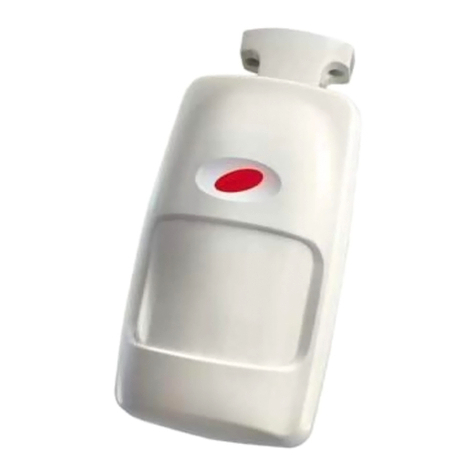
Visonic
Visonic K-980 installation instructions

GMI
GMI PS1 User handbook
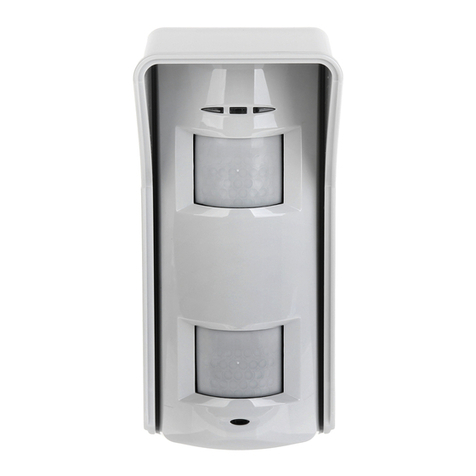
Pyronix
Pyronix XDL15TT-AM installation manual
